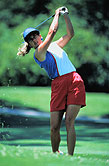Athletes Need to Guard Against Skin Woes

TUESDAY, March 24, 2015 (HealthDay News) — Sprains and fractures aren’t the only hazards athletes face. Certain skin problems are also common among sports enthusiasts.
The five skin conditions most often seen in athletes are blisters; turf burn (abrasions from falls on an artificial surface); athlete’s foot (a fungal infection); sun exposure, and a type of acne called acne mechanica, according to the American Academy of Dermatology in their news release.
“Athletes who are aware of these five common issues can take action to prevent the vast majority of dermatologic problems they may encounter,” said Dr. Brian Adams in the academy release. He is professor and chair of dermatology at the University of Cincinnati College of Medicine.
Blisters are caused by heat, moisture and friction between the skin and shoes. Adams said the best way to prevent blisters is to wear synthetic, moisture-wicking socks, which help keep the skin cool and dry.
If you do get a blister, drain the fluid through one small point and keep the rest of the blister as intact as possible, because the skin provides good natural protection to promote healing, Adams said. It’s also important to keep the blister clean, he said.
Turf burns put athletes at risk for infection. Reduce the risk of turf burns by wearing additional padding, he suggested. If you suffer a turf burn, clean it carefully, apply a friction-reducing substance such as petroleum jelly and cover it with an adhesive dressing, Adams advised.
Athlete’s foot can be prevented by wearing synthetic, moisture-wicking socks and by wearing sandals in locker rooms and showers. If you’re prone to athlete’s foot, use an antifungal cream as a preventive measure, Adams said.
Acne mechanica is caused by heat, moisture, friction and clogged pores. It often occurs in areas where helmets, pads or other equipment cover skin and rub against it for an extended length of time. To prevent the condition, place a barrier between the skin and equipment, Adams said.
Athletes are exposed to ultraviolet (UV) light when they play outdoors in the daytime, even on cloudy days and in the winter, Adams said. This can lead to sunburns and skin damage. Use a broad-spectrum sunscreen with a sun protection factor of 30 or higher, and apply to all exposed skin, including the ears and hair parts, he recommended. Reapply at least every two hours that you’re outside.
If you encounter any of these skin problems, a board-certified dermatologist can help treat them, Adams said.
More information
The U.S. National Library of Medicine offers sports safety resources.

 March 25, 2015
March 25, 2015




 June 26, 2017
June 26, 2017 



